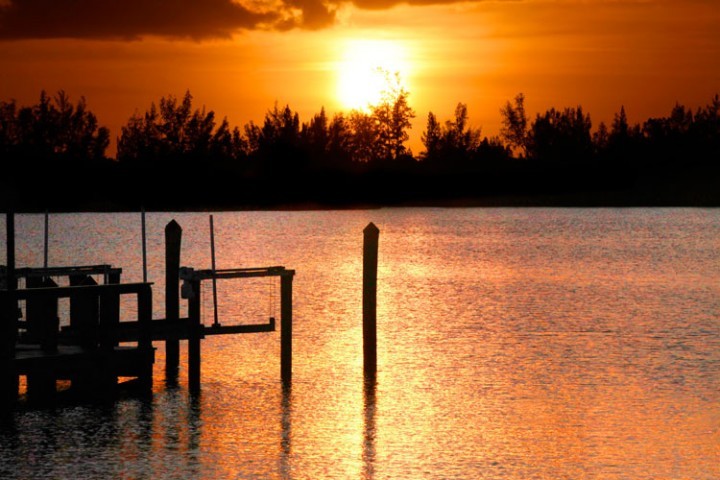
INDIAN RIVER COUNTY — Underfunded and mired in bureaucratic molasses, the Florida Department of Environmental Protection is on the verge of finalizing an action plan for the Indian River Lagoon that is so outdated it is equivalent to putting new fire hydrants in front of a building that has already burned down.
“It is perplexing,” says Vero Beach City Councilman Dick Winger. “We have a critical need that is not being addressed.”
“My biggest concern is that, even though individual agencies and officials have been contacted about the latest problems in the lagoon, the different parts of the government are not communicating or working together,” says Vero Councilmember Tracy Carroll. “There doesn’t seem to be anybody coordinating an effective effort.”
DEP’s Central Indian River Lagoon Basin Management Action Plan –BMAP, for short – is slated for implementation in early 2013, five years after the department determined the estuary was impaired by nutrient pollution from fertilizer runoff and other sources.
It says local governments do not need to take any additional action beyond what they are already doing to reduce pollution between Melbourne and the southern border of Indian River County for the next five years because seagrass restoration is coming along fine.
A summary of the plan presented to the Vero Beach City Council in October states, “Seagrass success is due in large part to completed projects in the subbasin.”
In fact, since DEP last surveyed the lagoon and began to formulate its ponderous repair plan, a series of environmental disasters has killed more than half of the seagrass in the central estuary, completely denuding the stretch between the Barber Bridge and Grant and making reference to “seagrass success” by the state’s environmental protection agency ironic if not obscene.
Since sea grass is the foundation of lagoon ecology, its loss threatens birdlife, bottlenose dolphins, manatees and green sea turtles, which mature in the estuary’s sheltered waters before braving the Atlantic.
Most resident game fish are already gone from the area north of Barber Bridge, according to lagoon scientists and longtime fishermen.
Unless the causes of algae blooms and seagrass loss can be understood and reversed, the lagoon could change from the most bio-diverse estuary in North America, supporting 4,200 species, to a sterile water body with few fish or marine mammals.
Council members were shocked and angry that DEP is moving robotically ahead to put in place a plan that is already obsolete and does not take into account current conditions in the estuary.
“To wait for another five years [to deal what is happening now] is frightening,” said Councilmember Pilar Turner.
“It seems that she knew nothing about what is actually happening in the lagoon,” says Carroll, referring to DEP Basin Coordinator Mary Paulic, who presented the plan summary to the council.
The first and largest of the environmental events DEP’s plan does not factor in was the 2011 superbloom of algae in the northern lagoon, a nutrient- fed, oxygen-consuming growth of phytoplankton larger and more long-lasting than any seen before that clouded the lagoon and killed 40 percent of the seagrass.
Next came the ongoing brown algae bloom in Brevard County, which Paulic herself called “unprecedented” when questioned by Carroll, and the unexplained die-off of all seagrass in Indian River County north of the Barber Bridge.
Environmental Administrator Jan Mandrup-Poulsen heads up DEP’s Watershed Evaluation Division. As scientists who work for him wrap up a three-year endeavor to map and set limits on pollution in tributaries that run into the lagoon in order to protect seagrass, he said he was unaware of the most recent seagrass loss.
At the October meeting, Paulic said she had heard something about the mysterious disappearance of seagrass in the lagoon, but that DEP is pressing ahead with its original effort while waiting to see if the devastation is “a little blip on the radar screen that will go away by itself.”
Carroll told her an environmental disaster is unfolding and asked that she do something to accelerate updated evaluations of the lagoon’s health and spur action to save the estuary.
“You need to impart a sense of urgency to your superiors and get some experts in here to figure out what is going on.”
Paulic said she would take the council’s concerns back to Tallahassee, but Carroll says she has not heard anything from DEP in the two and a half months since.
On Dec. 10, County Commissioner and Chairman of the Treasure Coast Council of Local Governments Peter O’Bryan sent a letter to Governor Rick Scott reiterating and expanding on Carroll’s plea.
“Since 2010, an estimated 32,000 acres of valuable seagrass has been lost in the IRL, potentially impacting billions of dollars of lagoon dependent economic activity. This is an unprecedented loss of a resource and it is urgent we address this situation immediately.”
The letter went on to note the Florida Department of Environmental Protection’s “data is five years old and does not reflect current conditions. It is critical that the data be updated as soon as possible . . . . we are strongly urging you to form a special task force to immediately look into seagrass loss.”
Scott is regarded as an anti-environmental governor by many.
In action the Miami Herald called “foolhardy” and dangerous to the state, Scott in 2011 slashed Florida water management district budgets by 40 percent, cutting more than $700 million from the amount available to monitor and clean-up pollution in groundwater, rivers, lakes, streams and estuaries, including the lagoon that is Vero Beach’s aesthetic and economic centerpiece.
Twenty days after sending his letter, at the start of the New Year, O’Bryan had not heard back from Scott about the hoped-for task force, according to O’Bryan’s assistant Terri Collins- Lister.



